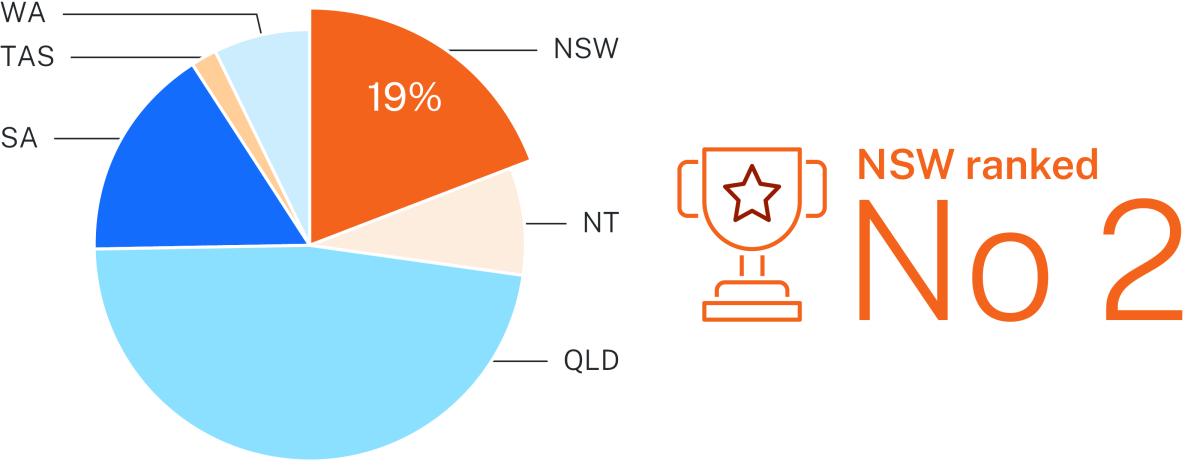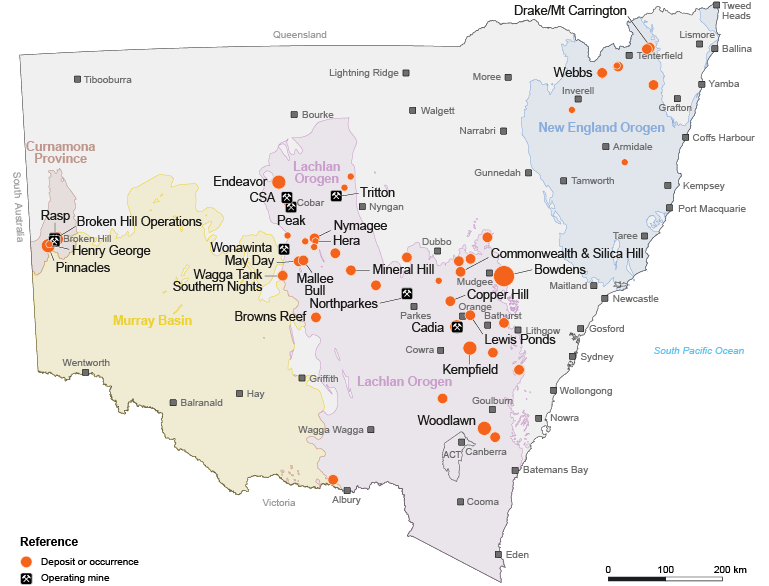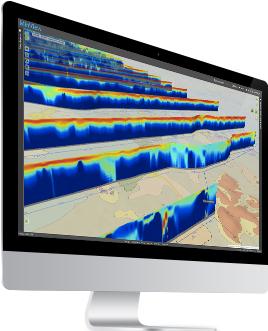Why NSW for silver
• Hosts many silver-rich deposits and is a major producer of silver
• Home of the iconic silver-rich Broken Hill Line of Lode
• Second in Australia for silver-contained resources
• Excellent opportunities to discover new deposits and to further develop existing resources
Overview
Silver is valued for its excellent electrical and thermal conductivity, its reflectivity, corrosion resistance and its antimicrobial properties and low toxicity.
Silver’s main uses are in electronics and electrical systems, for example, solar photovoltaic cells for solar panels and small amounts in mobile phone and television screens. It is also used in brazing alloys and solders, industrial processes, silverware, photography, jewellery, and in medical applications (notably rapid antigen tests). Additionally, silver has strong demand as an investment product (currency).
Global requirements for silver are expected to increase over the medium term. Increased use for solar panels and other electronics is forecast to more than offset lower use in other categories.
World production of silver was less than consumption in 2021, 2022 and 2023, despite slightly higher world production in 2023. This is expected to continue in 2024, despite forecast increases in world production. Silver prices are forecast to increase over the period to 2030 due to these expected supply deficits (Source: World Silver Survey 2023).
NSW resource

NSW is ranked second in Australia for silver contained resources, holding 19% of Australia’s Economic Demonstrated Resource (EDR) (Source: Geoscience Australia, Australia's Identified Mineral Resources 2023).
NSW hosts many silver-rich deposits and is a major producer of silver and the home of the iconic silver-rich Broken Hill Line of Lode. Mines such as Broken Hill and Endeavor mainly produce silver, and mines such as Cadia Valley Operations, Tritton Copper Operations and Northparkes produce silver as an important secondary product along with gold, copper, lead and zinc. The world-class Woodlawn and Endeavor deposits are 2 other major deposits with significant silver.
There are excellent opportunities for the discovery of new deposits and for the development of existing resources in NSW. This includes the Bowdens Silver Project, which is the largest known undeveloped silver deposit in Australia and one of the largest globally.
Deposit types in NSW
- Broken Hill Type (BHT): including the iconic Broken Hill lead–zinc–silver Line of Lode.
- Volcanic-Associated Massive Sulfide (VAMS): including deposits such as Woodlawn, Lewis Ponds & Kempfield.
- Epithermal: commonly have significant silver with lead, zinc and/or gold, such as at Mineral Hill, Bowdens and Mt Carrington.
- Sediment-hosted massive sulphide (SHMS): including the world-class Endeavor base-metal deposit, located in the north-western Cobar Basin.
- Orogenic base-metal: deposits can be large, often high grade and can be vertically extensive. Including where silver is a primary commodity (e.g. Thackaringa-type deposits near Broken Hill) and those with significant silver credits along with gold, copper and base metals (e.g. Browns Reef).
- Intrusion-related: commonly polymetallic and can include a range of precious, base metal and speciality metals (e.g. Pb, Zn, Sn, In, Au) with significant silver, such as the Conrad and Webbs silver deposits.
- Carbonate and sandstone hosted systems (MVT): including the Wonawinta silver–lead and De Nardi lead zinc–silver deposits.
Silver in NSW map

Download the Silver in NSW map (PDF, 2.74 MB).
Essential uses

Solar PV |

Electronics |

Electric vehicles and charging technology |

Scientific and medical instruments |

Photographic and x-ray film |

Investment |

Jewellery |

Silverware |
Quality data for explorers

NSW is known for its world class pre-competitive data, and has a long history of providing geological, geoscientific and geochemical data to promote investment in exploration.
Pre-competitive data to support silver exploration (and other commodities) is made freely available on the
Geological Survey of NSW’s web map application MinView.
The NSW Government has recently completed its largest ever geophysical survey acquisition program through airborne electromagnetic, airborne magnetic and radiometric, gravity, and deep crustal reflection seismic surveys. These surveys collected over 150,000 km2 of new data across the New England Orogen, the Lachlan Orogen and the Murray Basin areas that are prospective for critical minerals and high-tech metals, including silver.
Global overview
Global reserves are currently estimated to contain 720,000 tonnes of silver, or approximately 28 years of production at 2022 rates.
Poland has the largest known reserves of silver with about 24% (170,000 tonnes) of the world’s reserves.
Mexico was the largest producer in 2023 producing 6,400 tonnes – about 25% of world production.
Australia has the world’s third largest silver reserves and is the world’s sixth largest producer (Source: USGS).
2023 Global silver reserves – 720,000 tonnes silver content
2023 Global silver production – 26,000 tonnes silver content
Source: modified from USGS Mineral Commodity Summaries 2024.
NSW operating mines
NSW produced an average of 116 Mt of silver per year over the five years to 2022–23 from 13 mines. NSW silver production from current operating mines was 122 tonnes in 2022–23 (Source: NSW Resources).
Major silver mine resources and reserves

| Mine |
Contained silver (kg) |
Contained silver (Koz) |
|---|---|---|
| Broken Hill Operations |
1,722,920 |
55,393 |
| Cadia Valley Operations |
2,024,030 |
65,074 |
| CSA |
264,800 |
8,514 |
| Northparkes |
985,303 |
31,678 |
| Peak |
96,000 |
3,086 |
| Rasp |
1,468,000 |
47,197 |
| Tritton |
38,400 |
1,235 |
| Wonawinta |
1,581,790 |
50,856 |
| The contained silver totals are based on combined resources for that project (the amount of silver as a metal that is contained within one or more resources). Source: New South Wales MetIndEx database. | ||
NSW project and deposit highlights
| Project (or deposit) |
Contained silver (kg) |
Contained silver (Koz) |
|---|---|---|
| Bowdens Silver |
8,000,000 |
257,206 |
| Commonwealth |
102,608 |
3,299 |
| Copper Hill |
247,000 |
7,941 |
| Drake/Mt Carrington |
714,870 |
22,984 |
| Endeavor |
1,369,200 |
44,021 |
| Kempfield |
1,332,714 |
42,848 |
| Lewis Ponds |
496,000 |
15,947 |
| Nymagee |
30,400 |
977 |
|
South Cobar Copper Project
|
667,000 (203,290) (40,250) (423,460) |
21,430 (6,536) (1,294) (13,600) |
| Webbs |
308,000 |
9,902 |
| Woodlawn |
484,886 |
15,589 |
| Note: The contained silver totals are based on combined resources for that project (the amount of silver as a metal that is contained within one or more resources). Source: New South Wales MetIndEx database. | ||
Notes:
All percentages (including in the pie charts) are rounded to whole numbers.
Forecasts are based on NSW Resources’ interpretation of available information. Forecasts are inherently uncertain and should be seen as a guide only. Actual outcomes may be different.